MAP CONTROLS: Use slider or mousewheel to zoom, and hold down left mouse button
to drag.
KEY: Location markers are coloured from Green meaning exact to Red meaning
gone or unknown (details here)
Following the death of his father in 1887, Friedrich Alfred Krupp expanded the family enterprise. In 1886 the company had already acquired the Annen steel mill near Witten. In 1893 the Gruson works in Magdeburg was purchased (following a takeover agreement of 1892).
Krupp received its first order for 135 Panzer I tanks in 1933, and during WWII made tanks, artillery, naval guns, armor plate, munitions and other armaments for the German military. Armoured vehicles included PzKpfw I, PzKpfw IV, Sturmgeschütz IV and Selbstfahrlaffete Geschützwagen IV.
Thousands of citizens lost their lives during devastating air attacks on Magdeburg on 16th January 1945. A bomb attack wiped out the old city centre and reduced 90 percent of the buildings to rubble. 60 percent of the city was destroyed. The factories of the Krupp-Gruson-Werk, the Junkerswerk and the Brabag were badly affected. By the end of the war 80% of the plant facilities were destroyed.
The Soviet Army took over as the army of occupation and half of the equipment and documentation was removed from the site. In 1953 the post-war Soviet public company became an East German nationalised enterprise, VEB Schwermaschinenbau Ernst Thälmann; this was incorporated in 1969 as VEB Schwermaschinenbau-Kombinat "Ernst Thälmann" (SKET). Following further changes, SKET still exists as a heavy machine manufacturer.
Although Krupp was the prime contractor and manufacturer of the PzKpfw I, Henschel and MAN also produced the PzKpfw IB from 1935 and 1936 respectively. Some were also built by Daimler-Benz, and a new manufacturer, Wegmann, was brought into the programme in 1936. Production of the complete vehicle ceased in the middle of 1937 but Wegmann kept the chassis in production until the beginning of 1939 (for conversion to other uses).
All early models of Panzer IV were manufactured by Krupp but from the Ausf F production was extended to Nibelungenwerke and later also included Vomag. In December 1943 Krupp’s factory was diverted to manufacture the Sturmgeschütz IV (beginning in January 1944), and in the spring of 1944 the Vomag factory began production of the Jagdpanzer IV, leaving Nibelungenwerke as the only plant still assembling the Panzer IV.
|
1955
|
| | | | 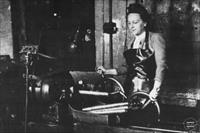 | | | | |
1: Krupp-Gruson works in Communist control, female work, Bu...
Taken: 1955 (Estimated)
Contributor: Wikimedia
Location Photo ID: 239
Added: 4 April 2010
Views: 425
Has Priority: 0
|
|
|
|
|
|
|
January 1951
|
| | | | 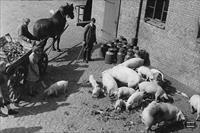 | | | | |
2: Krupp-Gruson works in Magdeburg post-war, pigs belonging...
Taken: 12 January 1951
Contributor: Wikimedia
Location Photo ID: 238
Added: 4 April 2010
Views: 255
Has Priority: 0
|
|
|
|
|
|
|
April 1945
|
| | | | 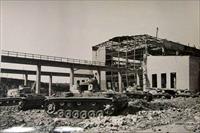 | | | | |
3: “Finished German tanks [Panzer III's] at the Krupp F...
Taken: 20 April 1945
Contributor: CRFU
Location Photo ID: 276
Added: 21 April 2010
Views: 292
Has Priority: 0
|
|
|
|
|
|
|
1918
|
| | | | 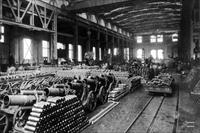 | | | | |
4: Arms manufacture during World War I, probably at Krupp, ...
Taken: 1918 (Estimated)
Contributor: Wikimedia
Location Photo ID: 275
Added: 21 April 2010
Views: 416
Has Priority: 0
|
|
|
|
|
|
|
February 1915
|
| | | | 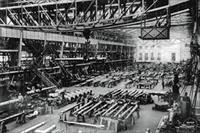 | | | | |
5: “Scene in the Krupp Gun Works, where Germany's Army ...
Taken: February 1915
Contributor: Wikimedia
Location Photo ID: 277
Added: 21 April 2010
Views: 387
Has Priority: 0
|
| | | | | |
|
|